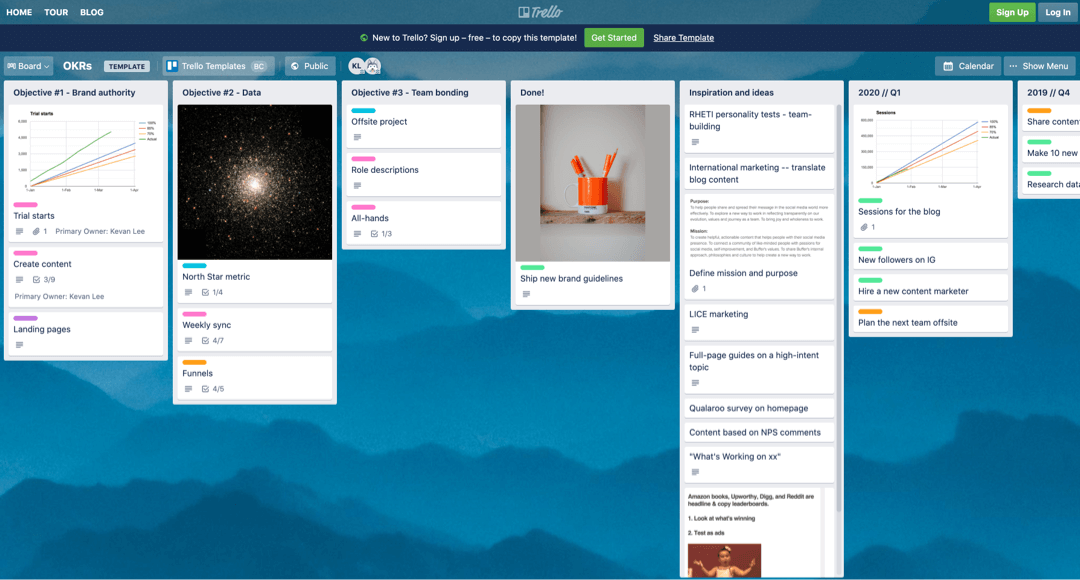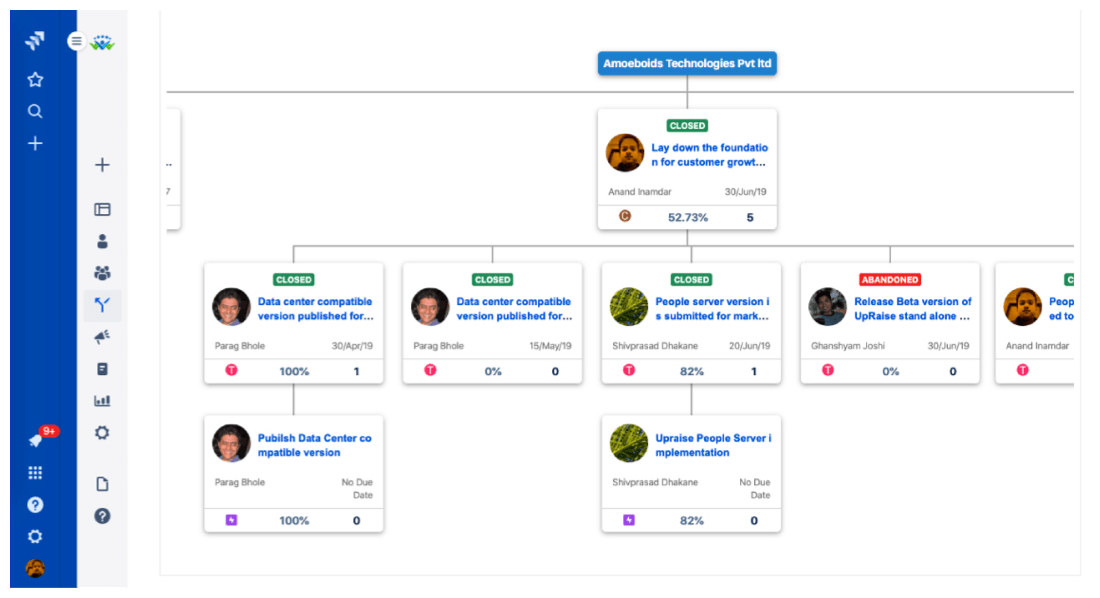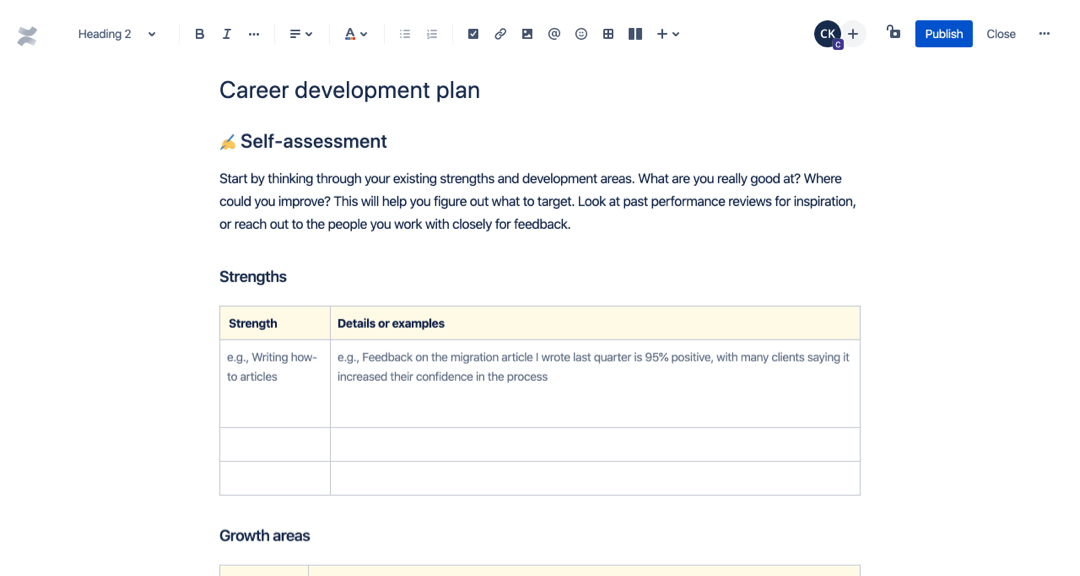Performance management for company-wide success
By Zöe Desroches
During rowing races, the coxswain sits at the helm of the boat, calling out orders to the rowers to work in unison, keeping the boat moving in the right direction at top speed so they can cross the finish line first. High-performing organizations are a bit like well-run rowing crews – with one big difference: On a rowing team, only the coxswain can see where the boat is headed; the rowers have their backs turned, and can’t see ahead.
You’re like a coxswain guiding a boat. But to help your company achieve its goals, you need your teams looking ahead with you, with a shared understanding of where the company is headed and their own roles. As a People professional, you help guide performance company-wide. So, you need to make sure everyone’s not just rowing in the right direction, but also looking in the same direction. You establish the processes that move your company forward, and make sure managers have everything they need to get their teams and individual workers across the finish line.
That’s where performance management comes in. It helps individuals, teams, and your entire org stay on track to meet your shared goals – because performance on all three levels is linked. In this guide, we’ll take a look at how to align your goals, create a feedback loop, pivot when needed, embrace technology, and make performance management an ongoing process.
Let’s take a look at five key steps to building a great performance management process. They’ll set you on the path to a virtuous cycle in which everyone knows exactly how their work contributes to the org’s success, and the company gets great benefits as a result.
Step 1
Align your goals
It’s a simple but key idea: Make sure everyone knows where they’re going. Set company-wide goals and then plan how they’ll trickle down to teams and individuals. Consider setting annual Objectives and Key Results (OKRs) that act as a north star for the entire company.
Use Confluence to run your strategic planning process and identify your big goals.
What makes a good OKR or goal:
- The Objective is clear and achievable in the timeframe
- Both the Objective and Key Result are well defined and easily understood
- The Key Result is measurable

Learn more about OKRs and try the Trello OKR template.
Another way of looking at this is through the lens of this goal-setting theory from Locke and Latham:
Once company-wide OKRs are set, help managers set team goals and smaller milestones for each person. This makes it easier for everyone to understand what they need to do – and helps you guide them while keeping everyone on the same path.

Help managers to hold everyone accountable by tracking their team’s priorities on a Trello board. Try organizing entire teams with the Team Goal Setting template.
Breaking down high-level objectives into easy-to-understand tasks lets teams see how their work connects with the big picture. Our research found this approach results in happier, more effective employees – a win for individuals and the company alike! (And, as a People person, what more could you wish for?)
Step 2
Create a feedback loop
Humans crave validation – so take every opportunity to let people know their work is on track and contributing to the company goals. When needed, make corrections to help team members get back on track. Frame these corrections as opportunities, not failures – nobody wants to get a bad review. And people usually want to do good work and not waste time.
This is where feedback cycles are vital. Whether you call them performance reviews, milestone meetings, or just goal updates, feedback check-ins help everyone understand their contributions, and whether they’re in sync with the company’s goals and expectations. Two key things to focus on are:
- Company-level performance management: Plan regularly-scheduled OKR check-ins to see if the company is on track to achieve goals. Quarterly or twice-a-year updates usually work best. By building an evaluation process into your calendar, every team member will know how they’re doing, and plans can be adjusted accordingly.

Take a look at how to use Jira and Upraise for OKRs – to document, track, and manage team goals. Or keep it simple with the Confluence OKRs template.
- hide
- Employee performance management: New research shows that learning and performance management can positively impact employee experiences. To manage individuals, implement feedback cycles that use simple, frequent evaluations to empower managers and help workers understand how their everyday tasks help everyone achieve bigger goals.

Managers, rejoice! Confluence has two ways to make employee reviews easier: First, there’s the Employee Development template. And if things aren’t going well, there’s a Performance Improvement Plan.
Step 3
Adapt your processes to changing times
Managers and teams look to People teams for guidance in changing and challenging times, seeking ideas for adapting policies, processes, and approaches. The global pandemic presented one of the strongest examples of how unexpected events can force companies to quickly pivot to rethink how, where, and sometimes when people work. These changes bring a flood of questions about how to manage a workforce in flux and adjusting performance goals accordingly. People teams need to provide the right answers while struggling with the same questions.
First, identify areas you can control inside your org to adapt to the changes. If your entire workforce suddenly went remote, you might keep everyone on the same work tools but you can’t control what their remote desks are like – or even if they have desks. Still, you can provide guidelines and resources for setting up a home office. By understanding what you can’t change – and where you can have the greatest impact – you can affect how everyone works while maintaining your company’s culture and goals.
Speed is also essential: Instead of waiting months to implement a new process or policy, do so quickly but mindfully. This tells your teams that you’re putting them first. Managing performance can mean changing your methods to fit your company’s new normal, no matter what it looks like.
In August of 2020, Atlassian (that’s us!) announced that all of our employees can work from wherever they want – forever. Here’s a look at how our People team shifted their thinking to help remote workers.
Step 4
Embrace technology
Performance management can have a powerful, positive impact on your organization’s goals, even if you need to change things up. But how do you stay on top of it all when so much is in flux? You guessed it: technology.
Effective performance management leans into technology to get things done. Using digital tools helps People teams react rapidly in the face of change and empowers groups and individuals to achieve their objectives.
Find the tools that work for you and your teams – knowing that they might look different for different parts of your organization. Your marketing team might want boards to track their campaigns, while your engineering department might use a ticket system. What matters most is that they manage performance in a way that works for them, with shared visibility for everyone. Flexible tools offer different views. Try to standardize on one toolset that meets everyone’s needs. That makes it much easier to see progress company-wide.
Tools to manage work are important and so are those that keep your teams connected (it doesn’t help if high-performing teams are rowing in different directions). Whether you’re hosting weekly video meetings or using a chat service to connect in real time, remember to encourage your teams to stay in touch so they can stay in sync, too.

Step 5
Make performance management an ongoing process
Performance management isn’t a one-and-done solution. When you find a methodology that works for you – at Atlassian, we use Agile Performance Management – it becomes part of your company’s DNA. Apply the process frequently enough to make sure it becomes part of the way everyone works.
Figuring out the right cadence for performance management can be tricky. Yes, more frequent is better than infrequent – but too frequent can feel like a burden. Consider when and how performance management can have the greatest impact, and train teams to provide performance feedback “off-cycle” on an as-needed basis if they see someone rowing in the wrong direction. Encourage them to also shout out when they see someone leading the team in a wonderful way. There’s no need to wait for an annual OKR review or individual performance review: if something’s working – or not working – identifying and highlighting it ASAP benefits everyone.
This is especially true when teams are working in multiple locations. Helping everyone stay on top of feedback cycles (including ways to deliver them remotely) is critical with distributed teams. Effective performance management techniques contribute to employee engagement and connection, making it easier for you to hit your targets – even if they’re shifting as the world changes.
Use Confluence to keep everyone up-to-date about feedback cycles so they know exactly what to expect, and when.